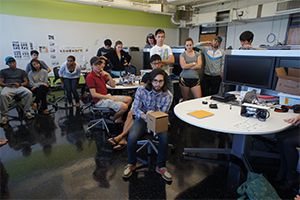One of the main reasons why students are drawn to Georgia Tech's OMSCS program is its flexibility in terms of location and schedule [1]. But it's the flexibility itself that leads to the lack of camaraderie and interactions with the student community, which has been one of the chief reasons why online students drop out [2]. Even if they don't drop out, it can negatively impact their learning experience [3]. According to a research conducted on a MOOC, students show improved performance and engagement if they interact with their friends [4].
Our project's goal is to improve the sense of community among OMSCS students by understanding why they feel isolated as well as the factors that prevent them from building connections with their peers and designing a solution that helps foster camaraderie among them.
References -
1. Duncan, A., Eicher, B. & Joyner, D. A. (2020). Enrollment Motivations in an Online Graduate CS Program: Trends & Gender- and Age-Based Differences. In Proceedings of the 51st ACM Technical Symposium on Computer Science Education (SIGCSE). Portland, Oregon, USA. ACM Press.
2. Content-Neutral VR-Capable Immersive Environments for Online Classes: Optimism, Obstacles, and Opportunities
3. Jason Lineberger. 2016. Isolation: A Pitfall of Online Learning [Article]. PBS Education. Retrieved from https://www.pbs.org/education/blog/isolation-a-pitfall-of-online-learning
4. Christopher Brooks, Caren Stalburg, Tawanna Dillahunt, and Lionel Robert. 2015. Learn With Friends: The Effects of Student Face-to-Face Collaborations on Massive Open Online Course Activities

Students in Georgia Tech's interdisciplinary MS in Human-Computer Interaction program do multiple group class projects, and a capstone individual project. Some projects are presented as part of other labs listed here; others are showcased in the MS-HCI Project Lab.
The two-year program spans four schools: Industrial Design; Interactive Computing; Literature, Media and Communications (Digital Media Program); and Psychology. Approximately 50 new students enroll each fall semester.


